21
No Doctrine Affected?
The Codex Sinaiticus was the Greek manuscript that tipped the balance away from the historical, preserved Bible and changed hundreds of scriptures in crucial places. Did you know that Sinaiticus casts doubt on the resurrection of Jesus Christ?
See it for yourself!
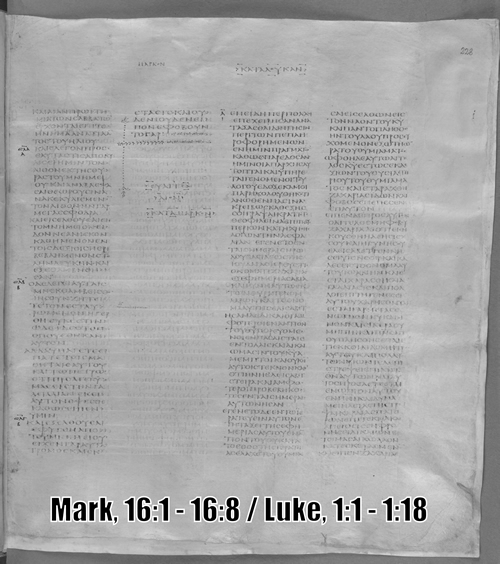
Figure 58 - Q77 F5r. Page of Sinaiticus showing gap
in text missing Mark 16:9-20
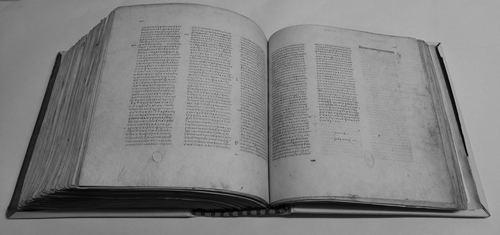
Figure 59 - Vaticanus pp. 1302-1303, showing gap in
text missing Mark 16:9-20
See those blank spaces? Neither Sinaiticus nor Vaticanus in its present form contains Mark 16:9-20. Do you know what that means? For the last 150 years, to a textual critic, or a Bible-doubter, it has meant two things:
1. Jesus in His resurrected body is not in the Gospel of Mark. Textual criticism then claims that Mark is the first gospel, not Matthew. That would mean that the first Gospel did not have a resurrected Jesus.
2. They say, since Mark was the first gospel written, then the whole doctrine of Christ's bodily resurrection is not part of the original Gospel. They say it was added later, by the church! That's funny. Jesuit-educated Norman Geisler said "none of these [changes] affect any basic doctrine of the Christian faith."[49]
I think the resurrection of Christ is a pretty basic doctrine. Don't you? Want to see more of what happens when you trust the Sinaiticus, and how you can answer those critics? I know that it's essential to their theories that Mark has to have been written first.
Everywhere, even in Wikipedia, they will tell you that it was in the 5th century, the 400s AD, that people got the idea that the gospels should be "Matthew, Mark, Luke and John," in that familiar order. They even go on to list what they say are 5th century documents that have that order.
But what they don't tell you, that would hurt their theory —is that their beloved Sinaiticus and Vaticanus are also in the order of Matthew, Mark, Luke and John! Shh! Don't tell them I told you. Let them look it up for themselves!
But they don't stop there. What comes after the resurrection? The ascension, right? Get ready for this. The Sinaiticus and Vaticanus obviously don't have the ascension from Mark 16:19, since they remove verses 9-20. But Sinaiticus doesn't stop there. It does not have the ascension of Christ in the Gospel of Luke, either. Here is the page of Sinaiticus that has Luke 24:51.
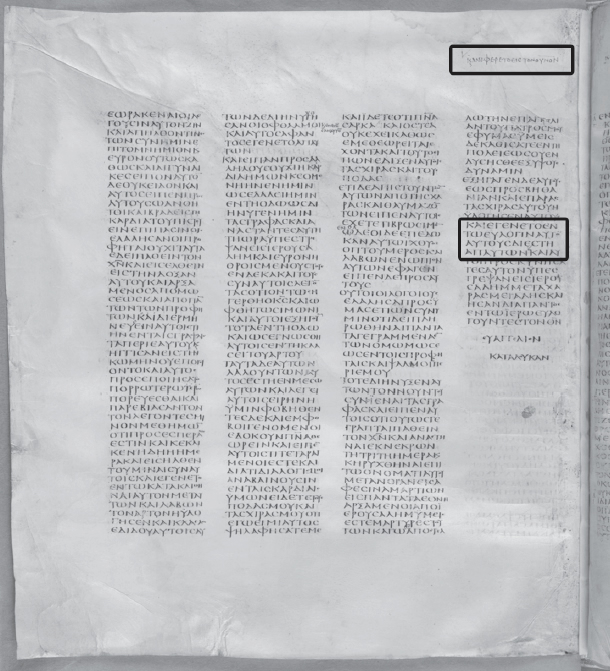
Figure 60 - Q79 F7v.
Page showing missing phrase in Luke 24:51
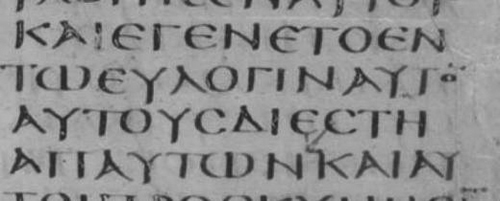
Figure 61 - Arrow showing
spot for missing phrase
It says in English: "And it came to pass, while he blessed them, he was parted from them." But can you see that arrow? That refers to words at the top of the page.
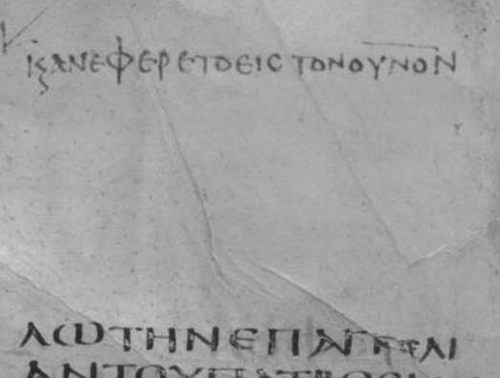
Figure 62 -
Missing phrase in top margin of page
They show the rest of the verse: "and [was] carried up into heaven." But you can see it for yourself that it was not something the original scribe wrote in the text. Someone wrote it, in a different ink, at the top of the page.
What does this mean? Let me ask you: once you remove Mark 16:9-20, in how many other verses of the four Gospels do you find Christ's bodily ascending into heaven? Just this one. So if Luke 24:51 doesn't belong, according to 20th century text critic C.S.C. Williams:[50] "...there is no reference at all to the Ascension in the original text of the Gospels."
It's a one-two punch! They say Mark is the first Gospel. Their Sinaiticus/Vaticanus Mark is missing the bodily resurrection. So they say the doctrine of Jesus' resurrection from the dead is a later addition.
But there is no ascension left in Mark, either. Then here in Luke 24:51, Sinaiticus is missing the ascension into heaven of our risen Saviour. So they say the doctrine of Jesus' ascension into heaven is ALSO a later addition!
Oh, and let me add that by "first gospel," they also meant that the "first gospel" was written about the year 80 AD, after the fall of Jerusalem and after most of the Apostles and eyewitnesses were dead.
Still think no basic doctrine of the Christian faith is affected? Now let's turn the tables on the text critics. Please get out a King James and look at Luke 1:1-3. It's important. "Forasmuch as many have taken in hand to set forth in order a declaration of those things which are most surely believed among us,"
Luke says that "many have" written accounts of the Gospel story. So there were Gospels —plural— before Luke wrote.
Verse 2: "Even as they delivered them unto us, which from the beginning were eyewitnesses, and ministers of the word;" Here Luke said that eyewitnesses back to the beginning were still alive, and ministered the word, and passed the information to Luke and others. So they were obviously still alive for the earlier gospels, like Matthew and Mark.
But text critics like my old professor, the late Dr. Ralph Martin, said Luke was written in the 2nd century, after they all were dead!
Verse 3: "It seemed good to me also, having had perfect understanding of all things from the very first, to write unto thee in order, most excellent Theophilus," So Luke took it in hand to check on the story from the very first scene, talking with eyewitnesses, and to write it down in order as it happened.
So get this, these modern scholars are calling the very first verses of the Gospel of Luke a lie! Do you trust Luke, or the text critics? Now go to Acts 1:1-2. You need to see this. "The former treatise have I made, O Theophilus, of all that Jesus began both to do and teach," Nobody I've found disputes that the same guy wrote both Luke and Acts. Luke here is referring to his Gospel.
Verse 2: "Until the day in which he was taken up, after that he through the Holy Ghost had given commandments unto the apostles whom he had chosen:" Whoops! "Until the day in which He was" what? "Taken up!" Luke just told us his gospel ENDS with the ascension! Imagine that!
The original New American Standard, from 1963 until 1994, actually removed those words from Luke 24, "and was carried up into heaven," copying Sinaiticus! They may have copied the Westcott and Hort 1881 English Revised Version and 1901 American Standard Version. But that's no excuse for taking out God's words. So the Lockman Foundation translators followed the Sinaiticus on this —even though Vaticanus and Alexandrinus and almost every other manuscript in existence has those words! And on top of it, Luke himself TOLD us they were there!
Who are you going to believe, the text critics, or the author Luke himself?
Gail Riplinger pointed it out in New Age Bible Versions. People saw the blunder. And in 1995 an embarrassed Lockman Foundation released the Updated NAS with even more mistakes, but —they put the ascension back into Luke 24:51.
So Sinaiticus is wrong. The text critics were wrong. And someone removed those words, gutting the doctrine of Christ. I think I see Satan's claw prints.
Here's the summary:
1. Only Sinaiticus and Vaticanus remove Jesus' bodily resurrection and ascension, by removing Mark 16:9-20.
2. Only Sinaiticus —not even Vaticanus— takes away Jesus' bodily ascension into heaven out of Luke 24:51, the only reference to Jesus' bodily ascension in the four gospels.
3. Two of the most basic, foundational doctrines of the Christian faith, Jesus physical resurrection and Jesus' physical ascension into heaven, are totally removed from crucial Gospel passages in the Sinaiticus.
Then unsuspecting Bible college students, the future pastors and leaders, are taught that they don't belong. Then they will teach those same Bible-doubting lies to their congregations or classes.
It's just another step in creating a Bible flexible enough for anyone to believe in: one world Bible for one world religion. This is the fruit of textual criticism. And this is the fruit of trusting Sinaiticus. If this is what the pro-Sinaiticus guys want, they can have it. I refuse to bow down.
I'm going to trust God's holy and preserved words in the 400+ year tried, tested and proved King James Bible supported by thousands of manuscripts that agree. Let them show me their doubt based so heavily on one or two confusing documents, and I'll show them my faith. And we'll see who stands on the judgment day.